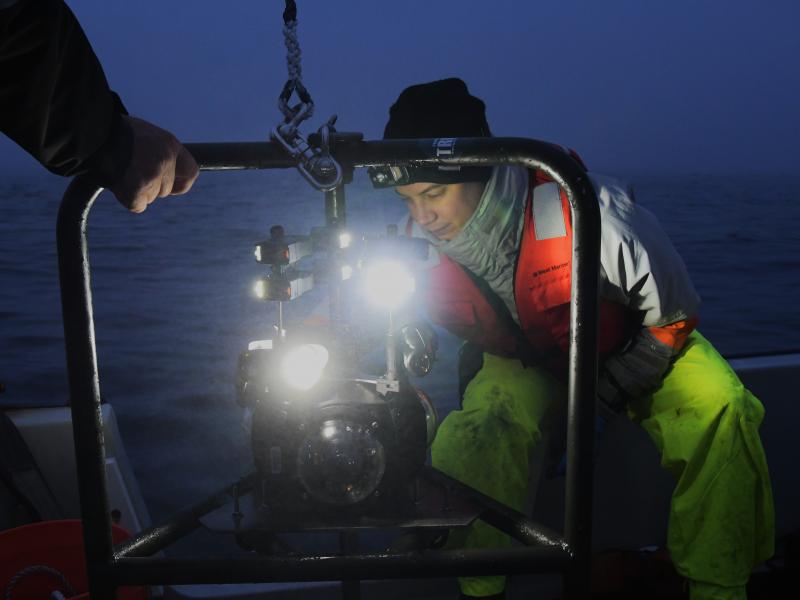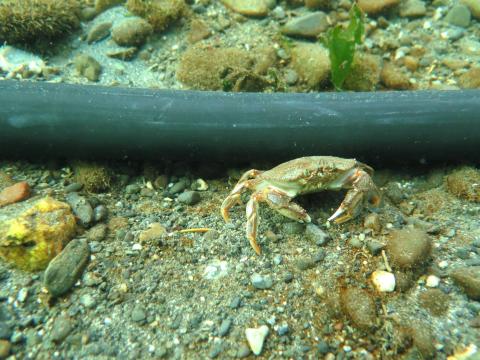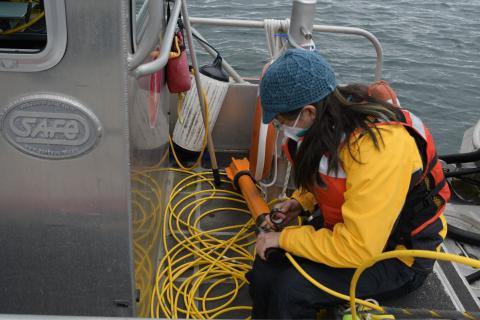
Electromagnetic Fields
Electromagnetic fields, often referred to as EMF, exist naturally throughout the world’s oceans; many animals in marine systems use electric or magnetic fields to find prey, navigate, and migrate. EMF has two components: electric fields (E-fields) and magnetic fields (B-fields), both of which naturally occur in the ocean. Earth’s magnetic field, as well as electric or magnetic fields created by individual animals, can be detected. With anthropogenic sources, such as electricity being sent back to shore, electric fields are typically able to be shielded by coating the cable, but magnetic fields are created as the electricity travels through the cable—these fields cannot be shielded. Structures such as pilings and foundations introduced to the environment can also distort natural magnetic fields. Electricity can also be introduced into the environment if electricity is unshrouded in equipment or cable connections. Since water is a good conductor, the electric field can travel in the water. As infrastructure and cables are installed throughout the world’s oceans for electricity or telecommunications, magneto-sensitive animals may be affected by the disruption of natural magnetic fields by fields from anthropogenic sources. For marine energy devices, EMFs are generated by both cables transmitting electricity back to shore as well as by the device itself. The Triton Field Trials for EMF were designed to determine which methods would most effectively measure the magnetic fields generated by marine energy devices, assuming that the electric fields would be designed to be contained.

Researchers are working hard to understand the field strength and spatial patterns associated with marine energy to determine how magnetic fields might be impacting marine environments. Currently, the intensity and variability of the magnetic fields generated by cables and devices are still largely unknown. The magnetic fields generated from electricity transmission underwater are much smaller than the magnitude to the background magnetic field of the Earth, so it is challenging to accurately measure the fields and quantify the effects on organisms.

During field trials, the Triton EMF team deployed a source cable in Sequim Bay, Washington, to evaluate two different measurement devices: a purpose-built marine sensor for measuring magnetic fields and a low-cost, commercial sensor with a magnetometer. Measurements were collected during different phases of the tidal cycle to understand the tide’s impact on the strength of the signal and the ability to measure the magnetic field. Additionally, a customized device was deployed to mimic the EMF generated by a marine energy device, such as a tidal turbine.
The team spent additional time in Sequim Bay collecting high-resolution background magnetic field data using a SeaSpy magnetometer. During this background testing, the team also took incidental measurements of a cable that crosses Sequim Bay with the SeaSpy2, which showed that the SeaSpy2 was able to detect a telecommunications cable underwater with this methodology.
Results from the EMF field trials are published here: Quantifying Background Magnetic Fields at Marine Energy Sites: Challenges and Recommendations
